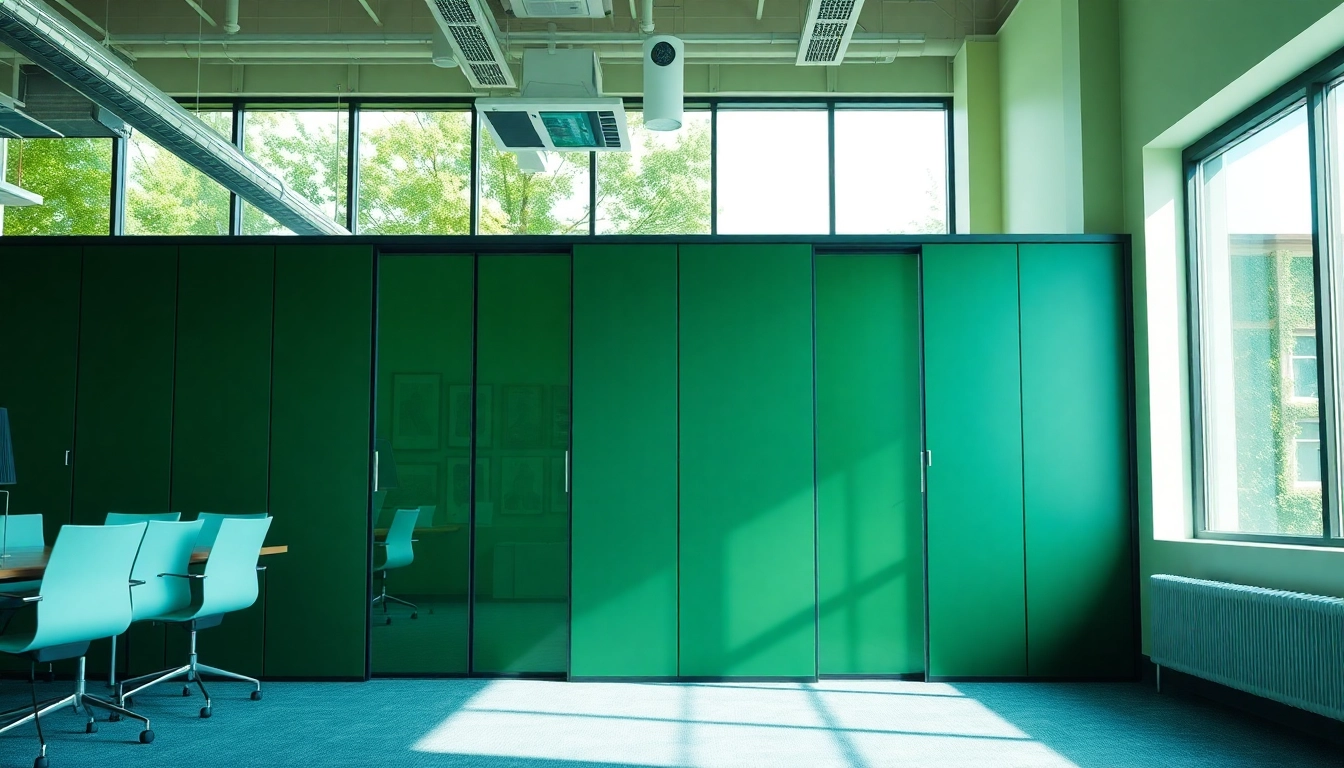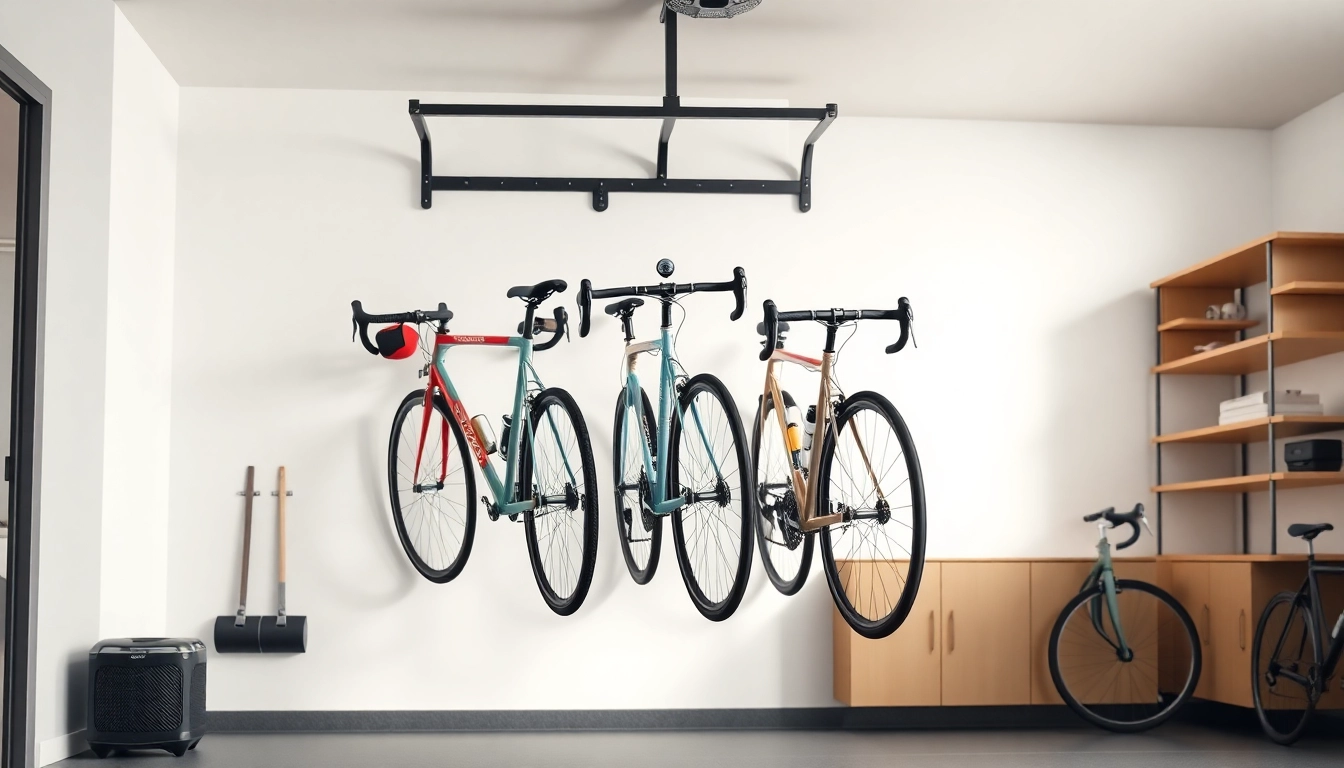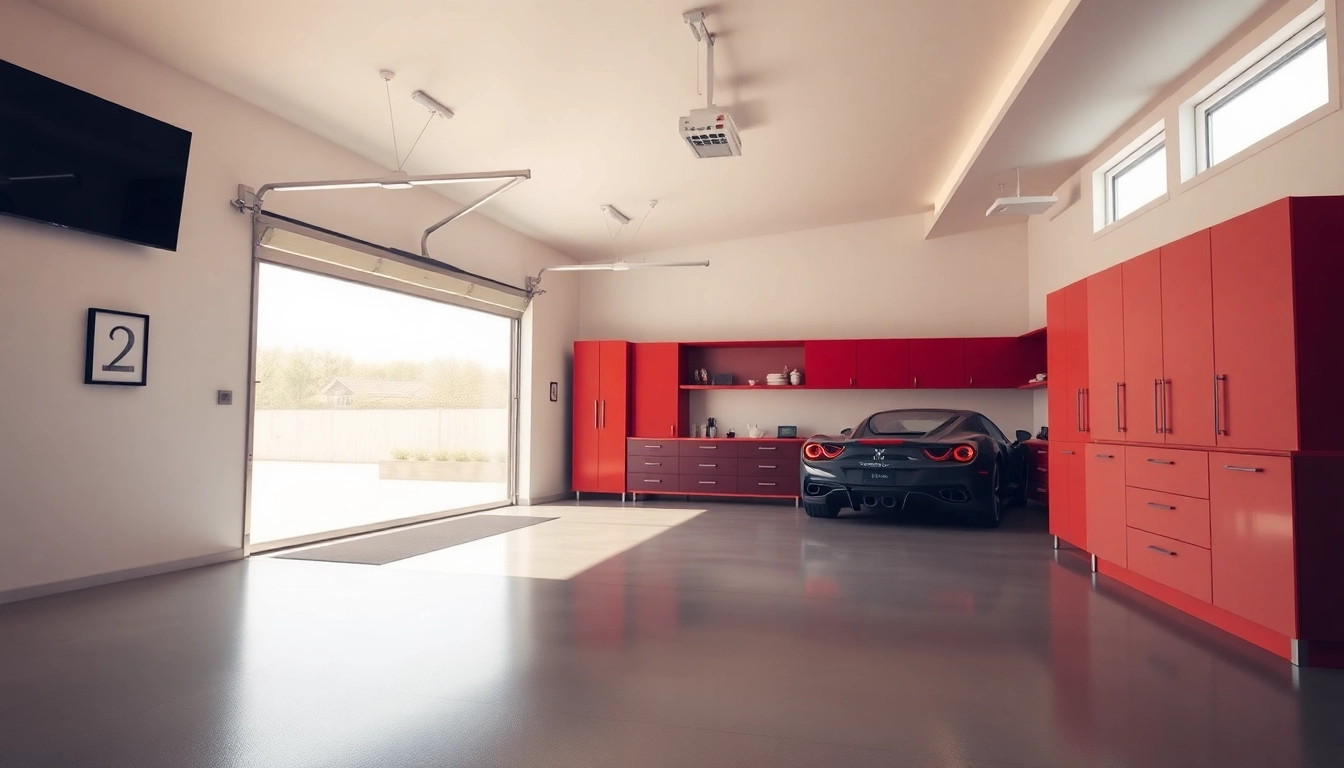Understanding Folding Partition Walls
What are Folding Partition Walls?
A folding partition wall is a versatile space management solution that allows for the efficient segmentation of larger spaces into smaller, functional areas. These walls can be opened or closed according to the specific needs of a room, making them ideal for environments where flexibility is essential. Typically constructed using lightweight materials like aluminum or vinyl, these partitions can be easily manipulated to create private conferences, changing rooms, or multipurpose event spaces. By utilizing folding partition walls, you enable a transformative approach to space usage that adapts to various situations quickly and effectively.
Key Benefits of Using Folding Partition Walls
The advantages of folding partition walls are numerous, providing solutions tailored to diverse environments, from residential to commercial and even industrial settings. Here are some key benefits:
- Space Optimization: Folding partitions allow users to maximize available space, enabling larger areas to be segmented into smaller, more usable sections depending on the need. This adaptability is particularly useful in venues like schools, auditoriums, and conference centers.
- Quiet and Acoustic Control: Many modern folding partition walls are designed with acoustical performance features, offering sound insulation that is essential in environments where noise control is critical, such as offices or classrooms.
- Cost-Effective: Rather than constructing permanent walls, folding partitions provide an economical solution without the commitment and expense of structural changes.
- Easy Installation and Maintenance: Folding partitions can be installed with minimal effort. In addition, they require less maintenance compared to conventional walls, making them an attractive choice for continuous use.
- Aesthetic Value: Available in various colors and materials, folding partitions can customize the look of a space, adding to the overall aesthetic appeal.
Common Applications for Folding Partition Walls
The versatility of folding partition walls allows them to be employed in multiple settings:
- Commercial Spaces: Often seen in restaurants and office environments, these partitions help create private meeting rooms or casual dining areas that can adjust based on the expected occupancy.
- Educational Institutions: In schools and universities, folding partitions allow for the quick reconfiguration of classrooms or lecture halls for various teaching methodologies.
- Events and Exhibitions: In trade shows or wedding venues, space needs may drastically change; folding partitions can adapt the layout accordingly, facilitating either intimate gatherings or grand presentations.
- Residential Use: Homeowners utilize folding partitions to create home offices or temporary guest quarters, enhancing functionality without needing major renovations.
Choosing the Right Folding Partition Wall
Factors to Consider Before Buying
When selecting a folding partition wall, several factors should be prioritized to ensure the right fit for your needs:
- Purpose: Define the primary function of the partition wall. Is it for noise reduction, aesthetic enhancement, or flexible room configurations? Understanding the goal will guide the selection process.
- Available Space: Measure the area where the partition will be installed. Consider the wall’s height, width, and weight capacity to ensure that it fits seamlessly into the existing design.
- Material Quality: Determine the best materials for durability and aesthetic alignment. High-quality materials can enhance the life of the partition while ensuring it looks appealing.
- Acoustic Performance: If noise control is essential for your needs, seek out models specifically designed for sound insulation.
- Budget: Establish a clear budget. Prices vary significantly, depending on size, material, and manufacturer. Like any investment, find a balance between quality and affordability.
Comparing Materials and Styles
Folding partitions come in various materials and styles, each providing unique advantages:
- Fabric Partitions: Lightweight and easy to handle, fabric walls can be customized in various colors and patterns. They are often used for residential settings and temporary spaces.
- Glass Partitions: Ideal for modern office environments, glass partitions allow for natural light transmission and a feeling of openness while preserving confidentiality.
- Wooden Partitions: Offering a more classic look, wooden partitions provide excellent soundproofing and can complement traditional interior designs.
- Aluminum Track Systems: Common in commercial settings, these systems are robust, durable, and often combined with various panel materials for versatility.
How to Measure for a Perfect Fit
Measuring for a folding partition is critical to ensure optimal fit and functionality:
- Determine Vertical Height: Measure from floor to ceiling or the desired height of the partition. Consider any fixtures or features that may affect installation.
- Measure Horizontal Span: Assess the width of the area where the partition will be located. Include space for wall tracks or supporting structures if applicable.
- Account for Doorways: If the partition will include doors or openings, measure these carefully to ensure smooth operation.
- Consider Overlap: Some partitions require a slight overlap with adjacent walls for stability. Ensure you factor this into your measurements.
Installation and Maintenance Tips
DIY Installation Guide for Folding Partition Walls
Installing a folding partition wall can be a rewarding do-it-yourself project. Here’s a step-by-step guide:
- Gather Tools and Materials: Ensure you have all necessary tools on hand, including a measuring tape, level, drill, screws, and wall anchors.
- Prepare the Site: Clear the installation area of any furniture or obstructions. Clean the surface area where the partition will attach.
- Install the Track System: Follow the manufacturer’s instructions to install the upper track securely. Ensure it is perfectly level as this will affect the functionality of the folding mechanism.
- Attach Wall Panels: Carefully attach the wall panels to the track system, ensuring they are securely fixed and can slide smoothly.
- Final Adjustments: Check that the partition operates correctly, making adjustments as needed. Test for stability and ease of opening and closing.
Common Challenges and How to Overcome Them
While installing folding partition walls is generally straightforward, you may encounter a few challenges:
- Alignment Issues: If panels do not align correctly, review the track installation. Ensure all screws are tightened and the track is level.
- Weight Distribution: Parts may feel heavy during installation. Enlist help or use a pulley system for larger panels to distribute weight evenly.
- Operational Hitches: If the panels do not slide smoothly, check for debris in the tracks or improper installation. Regularly maintain the tracks to prevent similar issues.
Maintaining Your Partition Wall for Longevity
To ensure the longevity of your folding partition wall:
- Regular Cleaning: Keep the wall and tracks clear of dust and debris. For fabric walls, follow manufacturer cleaning guidelines, while hard surfaces can often be cleaned with a damp cloth.
- Lubrication: Apply lubricating spray to the tracks periodically to maintain smooth operation. Be cautious not to overspray, as this can attract more dirt.
- Inspect Hardware: Regularly check screws, tracks, and panels for wear. Replace or repair any components that seem damaged to avoid larger issues down the road.
Innovative Uses of Folding Partition Walls in Various Settings
Folding Partition Walls in Residential Spaces
In residential environments, folding partition walls serve multiple purposes. They can create temporary guest rooms, divide spacious family areas for different activities, or provide a private office space at home. For instance, a modern open-plan living area can utilize a folding partition to create a cozy reading nook or home office, enhancing efficiency while maintaining a stylish appearance.
Benefits in Commercial Environments
Commercial spaces greatly benefit from the adaptability of folding partition walls. In bustling restaurants, these partitions can transform a single dining area into multiple serving sections during peak hours. Similarly, in offices, they can create distinct areas for meetings and collaborative work or adapt executive suites for varying purposes. Their ease of use ensures swift transitions between configurations, fostering better workflow and productivity.
Creative Conference Room Solutions
Conference rooms are often multipurpose spaces intended to accommodate various events. Folding partition walls allow organizations to adjust the size of the room based on the audience or type of meeting taking place. This fluidity not only enhances usability but can also contribute to energy savings by allowing for localized heating or cooling. For instance, in larger conference centers, a single large area can be divided into smaller breakout rooms, facilitating workshops or team activities.
Future Trends in Folding Partition Walls
Technological Innovations in Partition Design
As technology advances, so do the designs of folding partition walls. The future may see the integration of smart technology, such as automated opening mechanisms or sensor-driven operations that adapt space based on user needs. Lightweight materials and advanced engineering techniques will likely make partitions easier to use, enhancing user experience significantly.
Sustainability in Folding Partition Materials
With environmental concerns at the forefront, the building industry, including partition manufacturers, is increasingly focusing on sustainability. Expect to see more partitions made from recycled materials, or those that are fully recyclable at the end of their lifecycle. Brands that emphasize eco-friendly practices will appeal to a growing demographic of environmentally conscious consumers.
Design Trends: From Functionality to Aesthetics
In recent years, aesthetics in folding partitions have shifted towards more stylish, customizable options. Emerging trends include plush finishes, innovative textures, and various configurations that allow for seamless integration into both modern and traditional environments. As design becomes an increasingly important part of business branding and home decor, partitions will need to reflect this balance between functionality and visual appeal.


